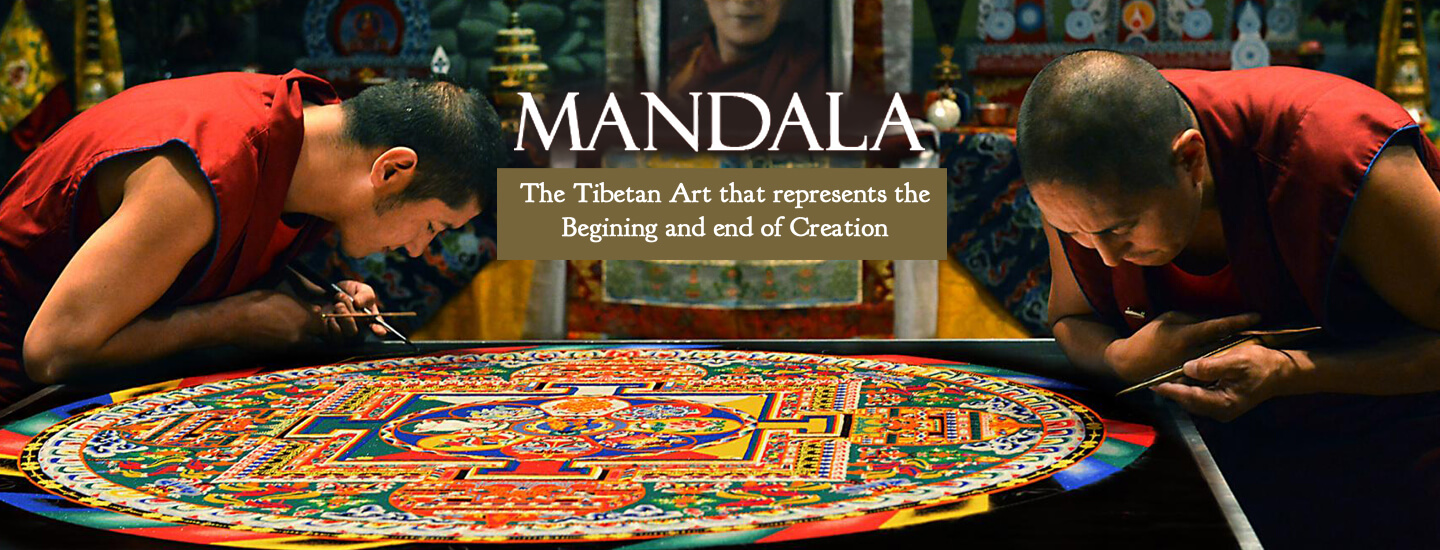Mandalas have a prominent role in Tibetan Buddhism. A mandala is a pictorial representation of the universe. It is a painting, created in coloured sands on a table, or a visualisation in the mind of a very skilled adept. The mandala is typically a depiction of a palace where one’s consciousness travels during meditation. Each object in the mandala has a special significance and it represents the various doors and deities to ultimate spiritual wisdom leading up to the state of Nirvana (enlightenment).
The mandalas not only assist in our journey towards enlightenment but also help protect and heal ourselves. They purify our thoughts and actions. A traditional Tibetan mandala consists of several deities (divine beings), with the principal deity or divine being in the centre of the diagram. There could be hundreds and thousands of deities in each mandala, many of whom are invisible to our eyes even to point out in the diagram. Each deity that resides in the mandala has unique divine traits and mystical powers. Each mandala thus teaches us a unique spiritual lesson.
It is common Buddhist belief that mandalas constructed from sand gives the creators of the mandala as well as its viewers most positive energies and blessings. The Buddhists believe that mandalas were introduced by Lord Buddha himself.
The sand mandala painting begins with an opening ritual, during which the Buddhist monks sanctify the place where they will create the mandala. This is done though chants and prayers and by summoning the divine forces. Some monks can choose to wear special colourful attires and even dance during the mandala making process, as this represents the celebration of life. The process of mandala making can take several days depending upon the size and elements added to it.
The monks begin drawing out the mandala from the centre and working towards the outwards. They use metal funnels called chak-pur to place millions of grains of varied colored sand to make the designs. Chak-pur can be powdered marble, flowers, herbs, grains or precious stones. When poured with the help of a metal rod, it resembles flowing waterfalls.
Upon completing the mandalas, the monks offer special prayers to the deities to bless all the sentient beings of the universe. As senior monk begins chanting, the junior monks begin the annihilation of the mandala by gently erasing it with their knuckles. This process creates a cross of grey sand, contrary to the beautiful colorful patterns that were earlier created.
A monk as part of the mandala ritual takes a paintbrush and gradually and cautiously brushes the sand from the edges to the centre of the mandala. The destruction of the mandala highlights the impermanence of life. The sand is transferred into a pot and dissolved in flowing water. This ensures that spiritual wisdom spreads to the world.


